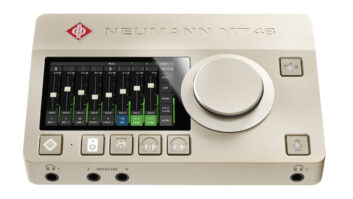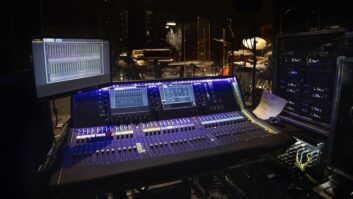
I love consoles. I like a good controller, too, especially when they’re done well. I just got back from AES and for the second time this year got up close with Yamaha/Steinberg’s Nuage. It has an elegant, hands-on interface and is great for certain types of production work. But for recording, there’s nothing like the hands-on touch a console brings to a session. There’s a certain quickness and confidence you can feel when reaching for integrated preamps, faders, EQs and processors. It brings the stress of a session down, while boosting creativity for both the engineer and talent.
advertisement
In my work as a reviewer and tech wrangler for Mix, I’ve always watched with interest as companies release new live or recording consoles, and where they set the bar relative to features vs. price. [To be clear, I’m defining a console as a device that has mic preamps, monitor section and at least 16 faders.] At one end, the race to the bottom has been a repeating theme as companies duke it out by lowering prices and upping features—challenging the competition to match them or often watch sales slip.
Over the last decade, in both the live and studio console markets, there’s been a wide swing in what’s available, and for whom. However you may like them, the cruise ship-sized, large $$ console has passed its “sell by” date—except for a fortunate few. In their place, a few $80k-range desks have emerged, which leaves the home and smaller project studio users out of the picture. But recently, there has been a move to the middle and interest from a new set of buyers looking for something affordable and targeted to modern workflows, whether analog, digital or a hybrid.
Yamaha has always played well in this range, as have PreSonus and Mackie, companies that continually redefine both live sound and recording consoles. Then the category blew up. Behringer bought Midas and Klark-Teknik in 2009 and in 2012 released the X32 digital live sound mixer, bringing an unprecedented range of features below $3k and maintaining a Midas-like feel to the product. Soundcraft released the Si Expression 3 at Winter NAMM 2013, for about the same price. They matched the features of the X32 and brought along Harman HiQnet integration with a 64×64-channel option card slot and I/O support for AES, FireWire/USB/ADAT, Aviom, CobraNet, BSS BLU Link, Dante and optical MADI. All that was missing were the words “take that!”
Behringer/Midas/Mackie/PreSonus weren’t first to recognize the large market at the entry level. Roland’s V-Mixer first broke that barrier with a mixer, digital snake and stage box with DAW integration for small venues/clubs, houses of worship and road-worthy rigs which can be thrown in a trunk or bus and moved quickly to the next town. Live sound is a hot market, raising the bottom line for creative-minded companies targeting products below $10k. I find similar competition in the mid-to-high price range, with DiGiCo, Avid, Midas and Yamaha all having solutions. And then this past month SSL entered the live market for the first time. It seems there is business high and low.
On the recording side it’s slightly different. A few examples: Rupert Neve Designs’ Portico offers a 16-channel recording console with all the bells for just over $32k. The Tree Audio Roots, vacuum tube console is $22,500 for eight channels of front end with EQ and limiter with four 500 series slots. API has the 1608 at just under $40k for a 16-channel, 8-bus console with 16 500 series slots, monitor section, talkback, 5.1 monitoring and optional P-mix automation. And SSL’s AWS 900 series sits in the $80k range, offering 24 channels and features incorporated from their higher end consoles.
But what about the hole in the middle: the under-$20k models? Something for those who want a higher-end signal chain, the hands-on feel of a console and a quality build. Just out of the box for live sound is the S3L Avid Live System, and for recording, API’s THE BOX, both coming in at $17,995. While that range isn’t new for live, THE BOX sits nicely in a big price gap not yet breached in recording at this level of quality, features and build. The compromise is, you only have four active recording channels, but for those looking for an affordable overdub room and mixing solution, this is great news.
The pitch to this emerging and vital market is aimed at the smaller-workflow user looking for quality in the mid-price range, under two dimes. Features like a unity gain zero button on each channel, and the ability to quickly switch the API 2500 stereo bus compressor across any of the two input channels are a great fit for the studio looking to get outside of the box in great style.
I’m guessing from seeing all the great new products coming out of AES (see our show report in this issue), that the race for the middle is here. I’m expecting we’ll be seeing a lot more new products targeted to the sometimes forgotten middleman looking for great gear in the mid-range.







